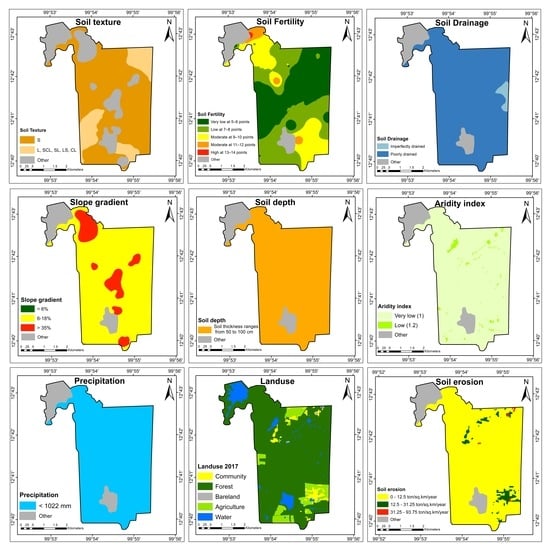Reducing Vulnerability to Desertification by Using the Spatial Measures in a Degraded Area in Thailand
Abstract
Share and Cite
Wijitkosum, S. Reducing Vulnerability to Desertification by Using the Spatial Measures in a Degraded Area in Thailand. Land 2020, 9, 49. https://doi.org/10.3390/land9020049
Wijitkosum S. Reducing Vulnerability to Desertification by Using the Spatial Measures in a Degraded Area in Thailand. Land. 2020; 9(2):49. https://doi.org/10.3390/land9020049
Chicago/Turabian StyleWijitkosum, Saowanee. 2020. "Reducing Vulnerability to Desertification by Using the Spatial Measures in a Degraded Area in Thailand" Land 9, no. 2: 49. https://doi.org/10.3390/land9020049
APA StyleWijitkosum, S. (2020). Reducing Vulnerability to Desertification by Using the Spatial Measures in a Degraded Area in Thailand. Land, 9(2), 49. https://doi.org/10.3390/land9020049




